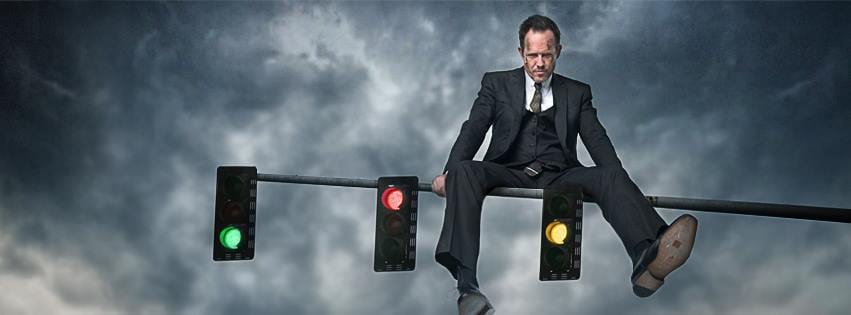Last week Entrepreneur published my latest article, about “How CEOs Can Maintain Their Edge.” In it I discussed how easy it is for CEOs to lose their effectiveness if they are not open to new ideas and information, and do not have a clear strategic direction. I mentioned two specific CEO failure modes that have lessons for all executives: The Cult Leader CEO and the Mr. Mayhem CEO. Here is more detail about each one.
Cult Leader CEO

Photo Credit: SantaRosa OLD SKOOL via Compfight cc
Cult leaders have a great advantage when it comes to instilling a vision in their followers. Unlike CEOs, they have no need to consider adjusting their vision or strategy, because they’ve surrounded themselves with people who believe in the absolute righteousness of it. Cult leaders have developed such an intense level of belief in their vision among their followers that no cult member questions any of their decisions, regardless of how bizarre, dangerous, or even fatal they may be (See Jim Jones, Davis Koresh, etc.).
Similarly, the Cult Leader CEO communicates a vision so compelling that his employees follow it fervently. This can be a positive thing, but this type of CEO convinces them that questioning the vision is like questioning the king – not permissible. Anyone who expresses doubt is branded as traitor.
Cult Leader CEOs can and have lead companies to success. The problem arises when their basic beliefs must be challenged due to market conditions, competitors, etc. Then they often fail in dramatic fashion, because no one in the organization has ever considered any other possibilities. Employees are frozen, because they have been trained to never question the vision or strategy, even when the company desperately needs to adapt.
As a CEO you can’t be so dogmatic. One of my favorite statistics is that more than half the companies that were listed in the Fortune 500 in 1995 were not on the list in 2007. After a mere twelve years, half the list had turned over. No CEO can ever be confident that his strategic vision today is permanent.
 In the article, I mention Research in Motion (RIM) as an example of this Cult Leader CEO failure mode. RIM, better known as the maker of the BlackBerry smartphone (and now called BlackBerry), had an unfailing and unhealthy belief in its own prowess. The company certainly had much to be proud of, growing from $300 million in 2003 to almost $20 billion in revenue by 2011. But the faith placed in the two CEOs, Mike Lazaridis and Jim Balsillie, proved to be unhealthy. A quick Internet search will reveal many “great” quotes from each that illustrate how completely they missed the threat posed by the iPhone and other smartphone platforms.
In the article, I mention Research in Motion (RIM) as an example of this Cult Leader CEO failure mode. RIM, better known as the maker of the BlackBerry smartphone (and now called BlackBerry), had an unfailing and unhealthy belief in its own prowess. The company certainly had much to be proud of, growing from $300 million in 2003 to almost $20 billion in revenue by 2011. But the faith placed in the two CEOs, Mike Lazaridis and Jim Balsillie, proved to be unhealthy. A quick Internet search will reveal many “great” quotes from each that illustrate how completely they missed the threat posed by the iPhone and other smartphone platforms.
For example, in February 2007 Balsillie said this about the iPhone: “It’s kind of one more entrant into an already very busy space with lots of choice for consumers . . . But in terms of a sort of a sea-change for BlackBerry, I would think that’s overstating it.” Unfortunately, for Balsillie and RIM, it was not an overstatement.
Mr. Mayhem CEO
 Unlike the Cult Leader CEO, fickleness is the norm with Mr. Mayhem. I based this failure mode on the character Dean Winters plays in that series of funny Allstate Insurance commercials you may have seen, which show how “Mayhem” can turn any situation into a disaster. The purpose is to convince people of the need for insurance. Unfortunately, if you work for a Mr. Mayhem CEO, you can’t buy insurance that will solve the problem.
Unlike the Cult Leader CEO, fickleness is the norm with Mr. Mayhem. I based this failure mode on the character Dean Winters plays in that series of funny Allstate Insurance commercials you may have seen, which show how “Mayhem” can turn any situation into a disaster. The purpose is to convince people of the need for insurance. Unfortunately, if you work for a Mr. Mayhem CEO, you can’t buy insurance that will solve the problem.
Mr. Mayhem CEOs create chaos in their organizations by continuously starting new projects and redirecting resources, to the detriment of all. Unable to settle on a focus or direction for any length of time, they cannot effectively lead an organization. Their dynamism and adaptability can be a positive, but the constant change and stress means that employees cannot produce meaningful results. Mr. Mayhem CEOs usually fail before achieving any sort of notoriety.
Some CEOs cause this chaos without realizing it by merely thinking out loud and having their thoughts translated into action by eager-to-please employees. CEOs must be careful to distinguish between directions and musings, as Scott Abel, CEO of Spiceworks, advised in my Forbes.com CEO series article about “What Surprised You Most About The CEO Role?”
How can CEOs avoid these extremes and maintain their edge? Seek out competitors, customers, and new executives to provide the information, ideas, and perspective needed to stay fresh: http://www.entrepreneur.com/article/238842
This article was excerpted in part from “The CEO Tightrope: How to Master the Balancing Act of a Successful CEO“





0 Comments